The Inner Harbor District, a historic seaport, tourist attraction and landmark of the city, is located within walking distance of Camden Yards and M&T Bank Stadium, at the mouth of Jones Falls, creating the wide and short northwest branch of the Patapsco River.
The name “Inner Harbor” includes any water west of a line drawn between the foot of President Street and the American Visionary Art Museum plus the surrounding area within the approximate street boundaries of President Street to the east, Lombard Street to the north, Greene Street to the west, and Key Highway on the south.
The Inner Harbor, with its historically shallow water (prior to manipulation through dredging), was not conducive to large ships or heavy industry and, in the 1950s, suffered from the economic decline with the arrival of container ships after World War II as well as restructuring common to many industrial cities in the United States, ending both its freight and passenger use.
To reverse the city’s decline and reconnect Baltimore with its waterfront, the Inner Harbor was gradually transformed with award-winning parks and plazas surrounded by office buildings, hotels and leisure attractions, starting with the adoption of the 13 hectare (33-acre) Charles Center project.
Between 1958 and 1965, Baltimore renewed this center of its business district with office buildings, hotels and retail shops. In 1963, the redevelopment program was expanded to include 97 hectares (240 acres) surrounding the Inner Harbor with corporate headquarters and hotels being built around the shoreline, with a public park and promenade added for leisure activity and community gatherings.
Following the U.S. Bicentennial, other tourist attractions were developed such as the National Aquarium, the Maryland Science Center and the Harbor Place Festival Marketplace (opened on July 4, 1980 and operated by The Rouse Company). The nearby Baltimore Convention Center and Hyatt Regency Baltimore Hotel added to the services, resulting in increased population density and attracting a huge number of tourists.
In recent years, Inner Harbor East, the area along the waterfront to the east of the Inner Harbor (in the direction of Fells Point and Little Italy), has been developed with mixed-use developments incorporating office space, condominiums, street-level retail space, restaurants and hotels.
In the 1970s and 1980s, with the success of the renewal of Baltimore’s Inner Harbor, the city became a worldwide tourist destination and a model of urban renaissance, planning and development in cities around the world, influencing more than 100 other cities and winning more than 40 national or international awards. In 1984, the American Institute of Architects cited it as “one of the supreme achievements of large-scale urban design and development in U.S. history. In 2009, the Urban Land Institute described it as “the model for post-industrial waterfront redevelopment around the world.”
Federal Hill Park (300 Warren Ave.), a former lookout during the War of 1812 and the Civil War located on the south side of the Inner Harbor, allows visitors to take in a dramatic view of Baltimore’s cityscape from the top of the hill.
The National Aquarium in Baltimore (501 E. Pratt St., Pier 3 and Pier 4, Inner Harbor) has a collection of more than 16,500 specimens representing 660 species, with exhibits including a multi-storey Atlantic coral reef, an open ocean shark tank, a 4-D immersion theater, a tropical rain forest, a glass pavilion with Australian wildlife, and a mammal pavilion that holds Atlantic bottlenose dolphins.
Check out “National Aquarium in Baltimore“
The Historic Ships in Baltimore (Piers 1, 3, and 5) features four historic ships permanently docked in the harbor that visitors can climb aboard and experience – the USS Constellation (first launched in 1854, it is the only Civil War-era ship still afloat), USCGC Taney (last fighting ship still afloat that survived the attack on Pearl Harbor), the USS Torsk (a Tench-class submarine, it is the last ship to sink an enemy vessel in World War II) and the Lightship Chesapeake (a U.S. Coast Guard lightship from the 1930s) plus the Seven Foot Knoll Lighthouse.
Check out “The Historic Ships of Baltimore,” “USS Constellation Museum” and “USCGC Taney“
Harborplace and the Gallery (Light and Pratt Sts.) are two pavilions with a mix of local and national restaurants and stores, plus Ripley’s Believe It or Not! Odditorium (has 500 of Ripley’s trademark “oddities” in seven different galleries, plus a mirror maze and a 4-D movie theater)
Maryland Science Center (601 Light St.) has 3 levels of exhibits, a planetarium, and an IMAX theater plus a special exhibit on blue crabs.
Top of the World (401 E. Pratt St.) an observation deck on the 27th floor of the Baltimore World Trade Center, offers sweeping a 360-degree birds-eye views of the city. On the pedestrian promenade outside the building is a memorial to the victims of the September 11, 2001, attacks.
Port Discovery Children’s Museum (35 Market Place), on the site of the historic Baltimore Fish Market, is a children’s museum with a three-story jungle gym specifically designed for kids ages 2-10.
American Visionary Art Museum (800 Key Highway), a mosaic-clad museum, has a collection of offbeat, innovative art produced by self-taught individuals, plus free outdoor movies and the Kinetic Sculpture Race.
The Reginald F. Lewis Museum of African-American History and Culture (830 E. Pratt St.), the largest of its kind on the East Coast, is dedicated to preserving the stories of the Maryland African American community, past and present.
Baltimore Museum of Industry (1415 Key Highway), located in an old cannery, holds exhibits on various types of manufacturing and industry from the early 20th century. one of its star attractions is the Baltimore, the oldest surviving steam tugboat and a National Historic Landmark.
The Baltimore Visitor Center (401 Light St.), just north of the Maryland Science Center, has touch-screen kiosks that tell visitors where to go, and staff can help clue you into events happening in the city. It also has public restrooms inside.
Power Plant Live! (601 E Pratt St.), the former Pratt Street Power Plant located 2 blocks north of the Inner Harbor, is an entertainment complex that comes alive at night with bars, clubs, restaurants and music venues that includes Phillips Seafood, Rams Head Live!, Hard Rock Cafe (opened July 4, 1997) plus Barnes & Noble and Maryland Art Place (a contemporary art gallery for Maryland artists).
Other places to visit here include the Lloyd Street Synagogue (the third-oldest synagogue in the United States, now the Jewish Museum of Maryland), Civil War Museum (President Street Station), Sports Legends Museum at Camden Yards, Dr. Samuel D. Harris Museum of Dentistry (University of Maryland), Babe Ruth birthplace and museum, Oriole Park at Camden Yards (home of the Baltimore Orioles), Camden Yards Sports Complex, Columbus Center (home of the University of Maryland Biotechnology Institute), Bnai Israel (a Moorish Revival synagogue now open as a museum), Holocaust Memorial (E Lombard and S Gay St.), Lockwood Place, Geppi’s Entertainment Museum (a privately owned pop culture museum at Camden Station opened last September 2006), M&T Bank Stadium (home of the Baltimore Ravens), Royal Farms Arena and the Pier Six Pavilion (a music venue at 731 Eastern Ave.)
Blue and white water taxis (US&6-12), from 17 locations, connect passengers from the Inner Harbor to Fells Point, Canton, and Fort McHenry.
Check out “Fort McHenry National Monument and Historic Shrine – Birthplace of the Star Spangled Banner
You can explore the Inner Harbor on a traditional paddle boat (US$12 per half-hour rental) or the colorful Chesapeake Bay ‘Chessie’ Monster (US version of Scotland’s ‘Nessie,’ US$20 per half-hour rental), both classic childhood favorites. Both boats hold up to four occupants. If you don’t feel like paddling, there’s the electric boat (half-hour rental – US$10 for one person or US$15 for two).
Visitors can also explore the harbor via the red and purple-bottomed Cruises on the Bay by Watermark (US$6-17) and the larger yacht Spirit of Baltimore (US$42 and up); the bright yellow speedboats of Seadog Cruises (US$20 range) and the wood-paneled pirate ship The Fearless by Urban Pirates (US$20-25).
Cruise ships also offer narrated, 45-min. tours of the Inner Harbor where you’ll learn about the city’s maritime and industrial history as well as the resurgence of the waterfront, Federal Hill, and Fells Point. You can also avail of 60-min. tours focusing on Fort McHenry, 90-min. cocktail cruises and spectacular 60-min. “city lights” tours.

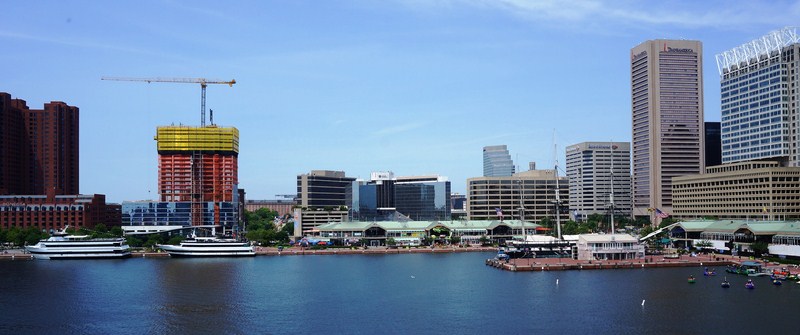
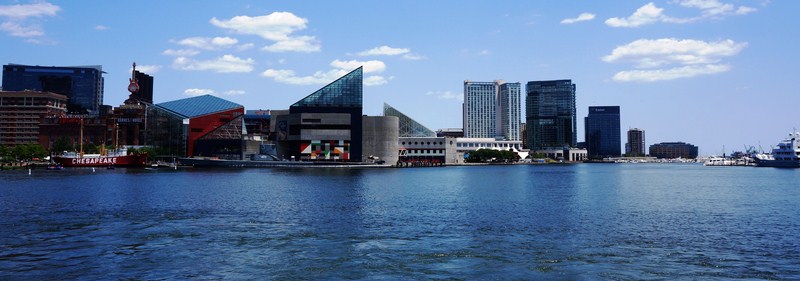
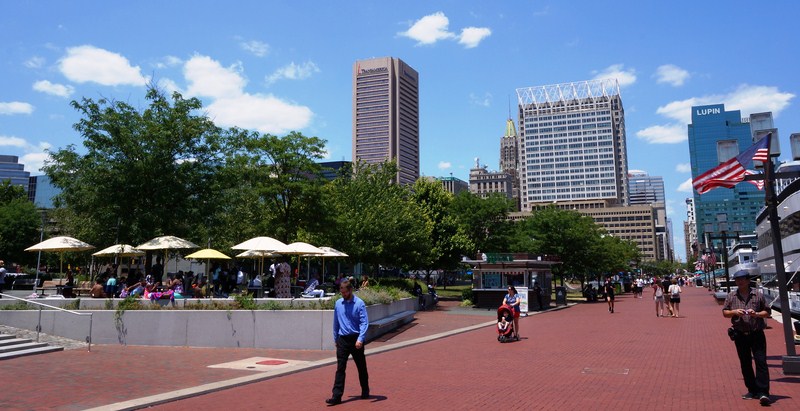
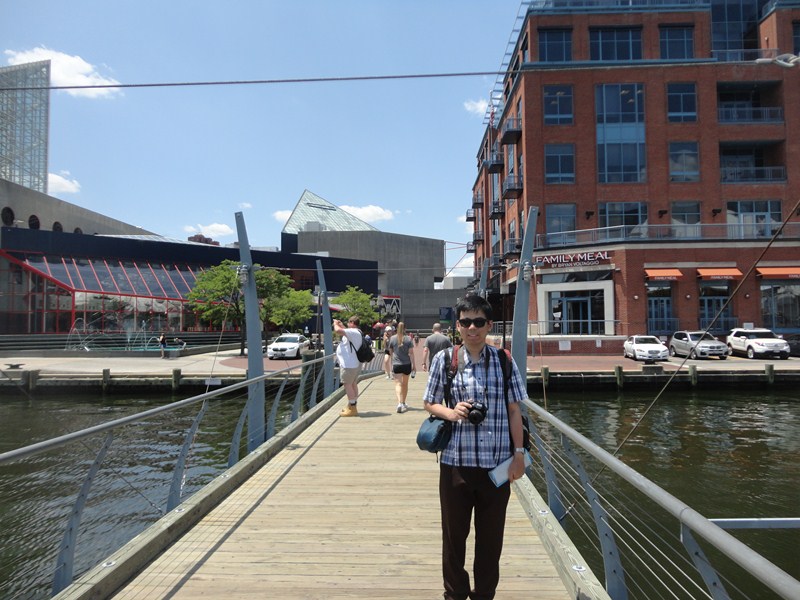
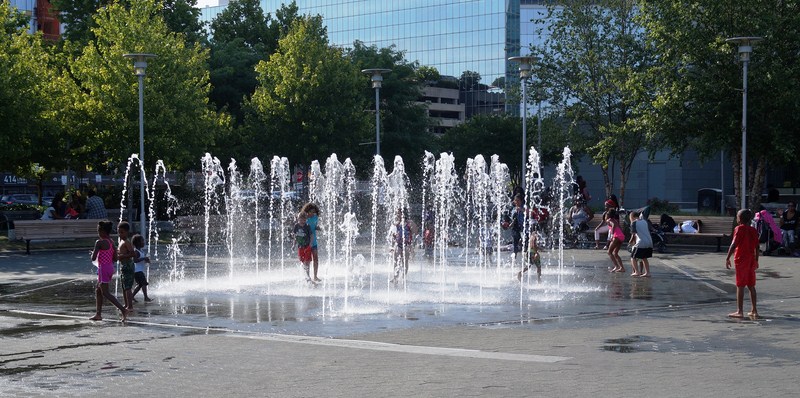

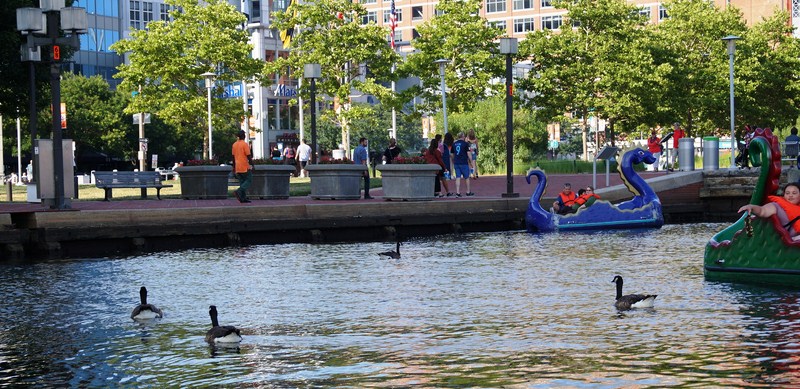
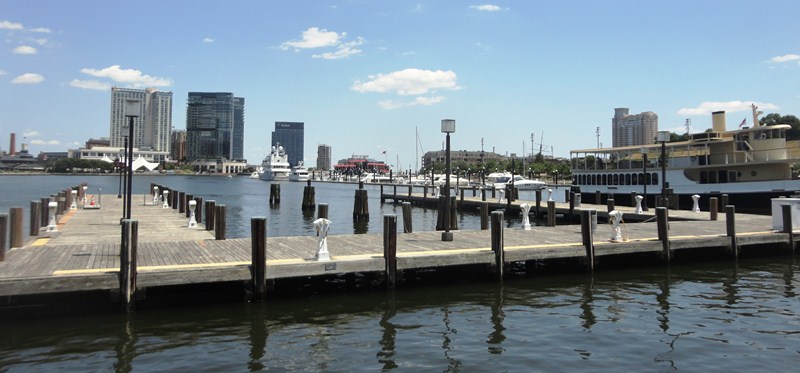
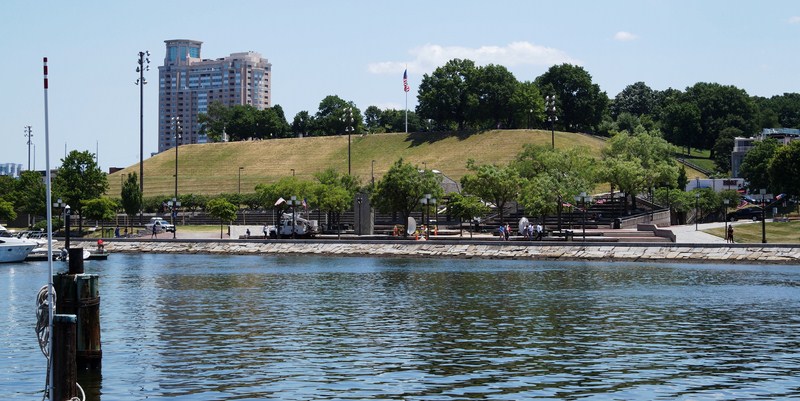
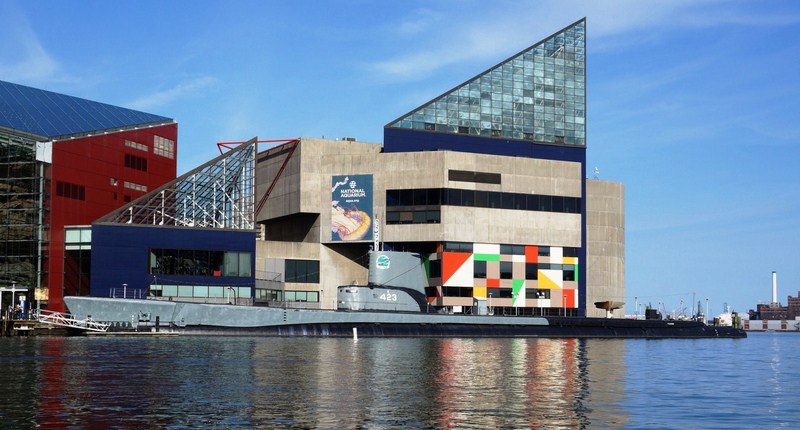
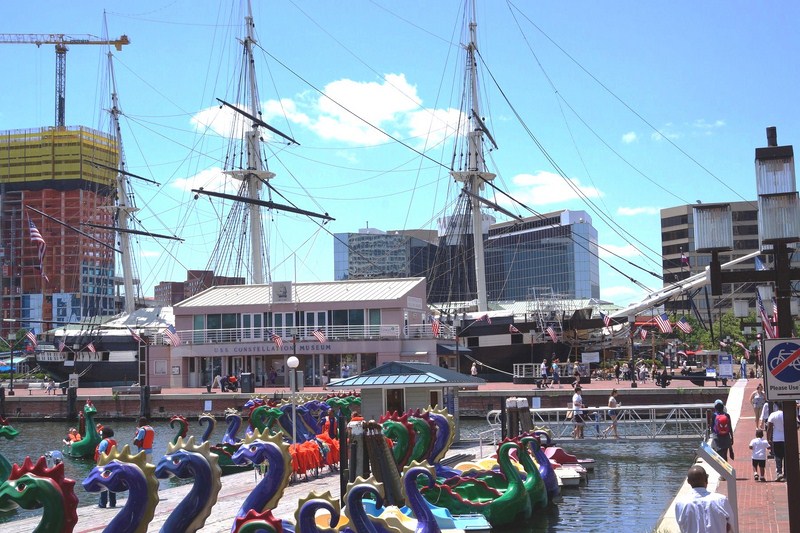
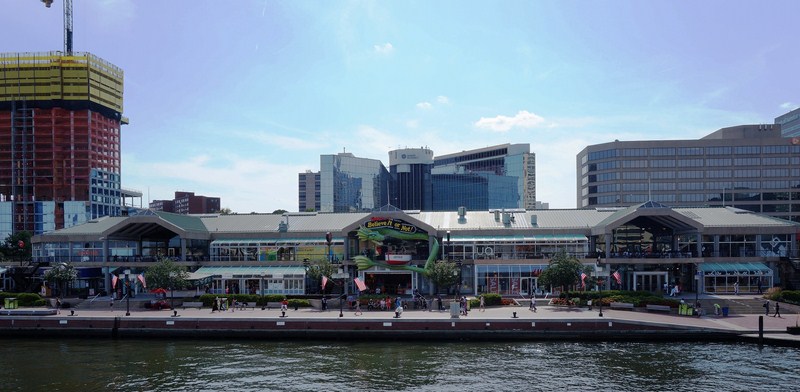
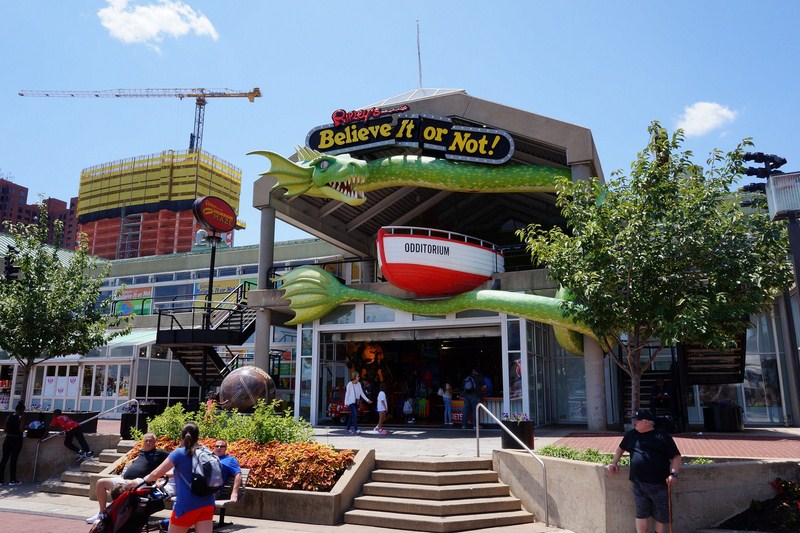
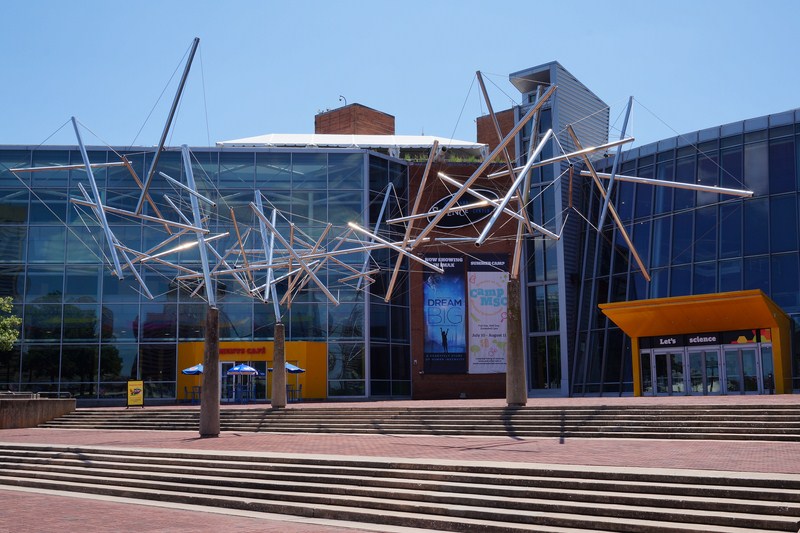
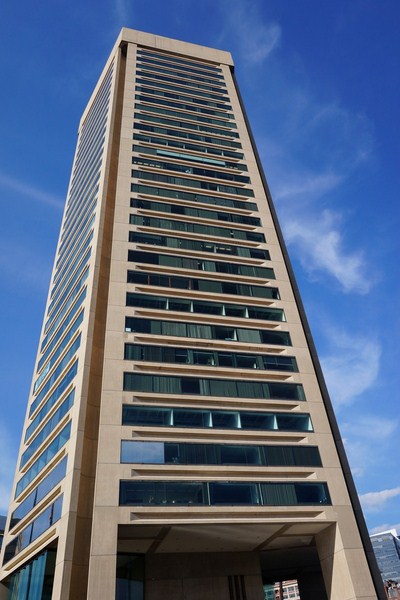
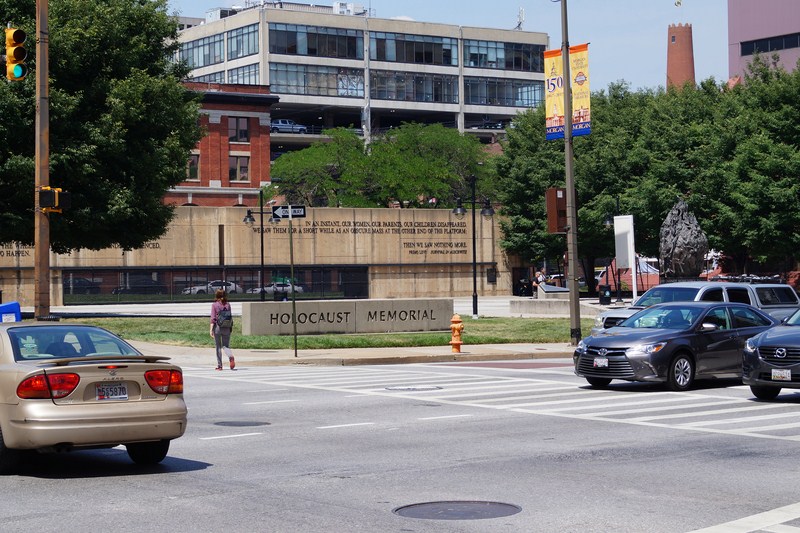
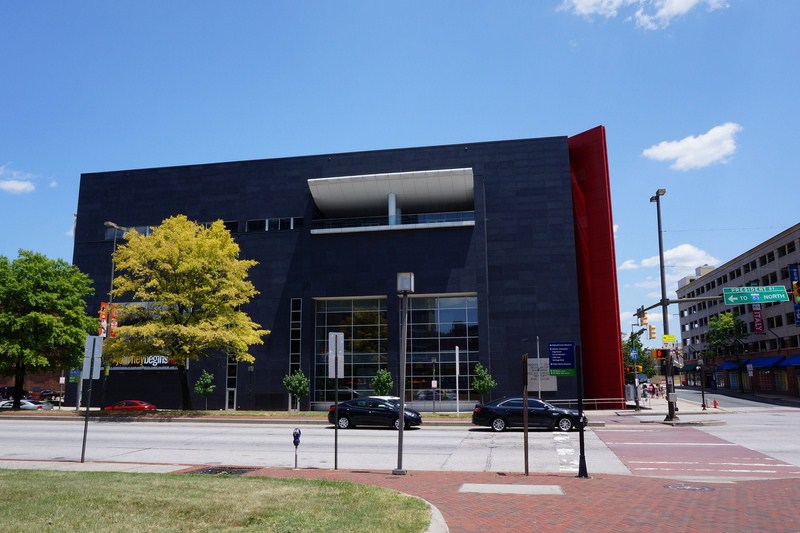
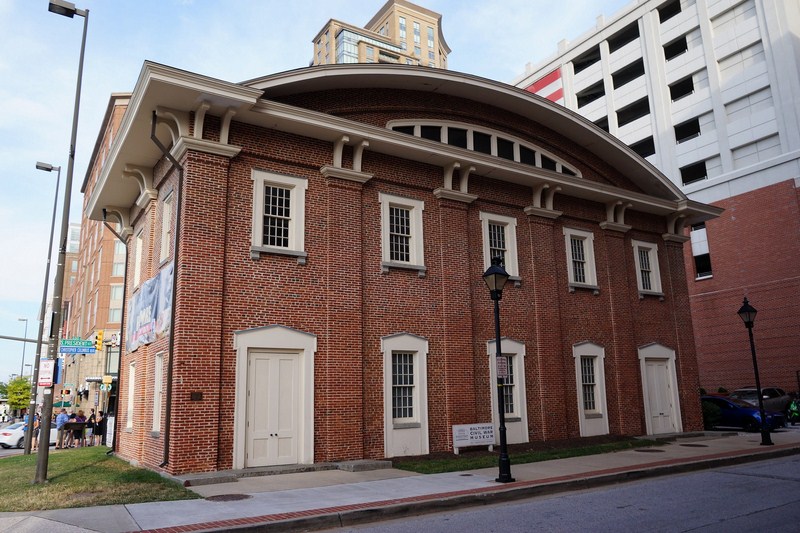
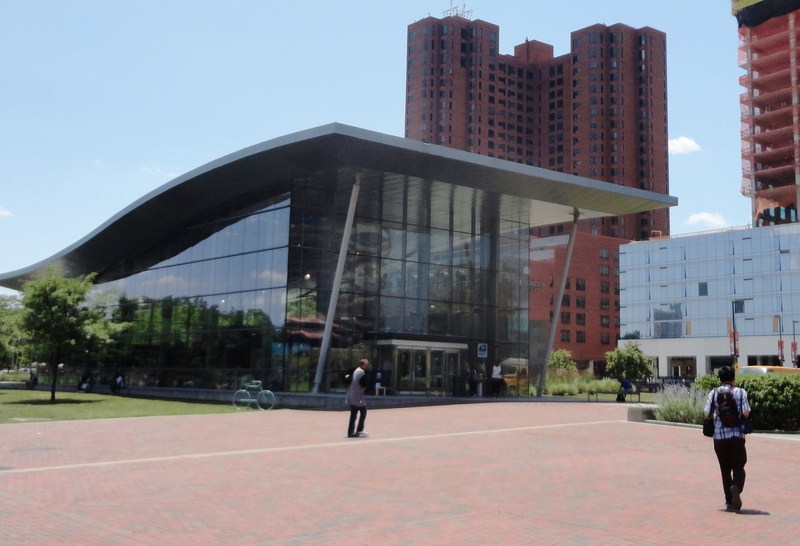
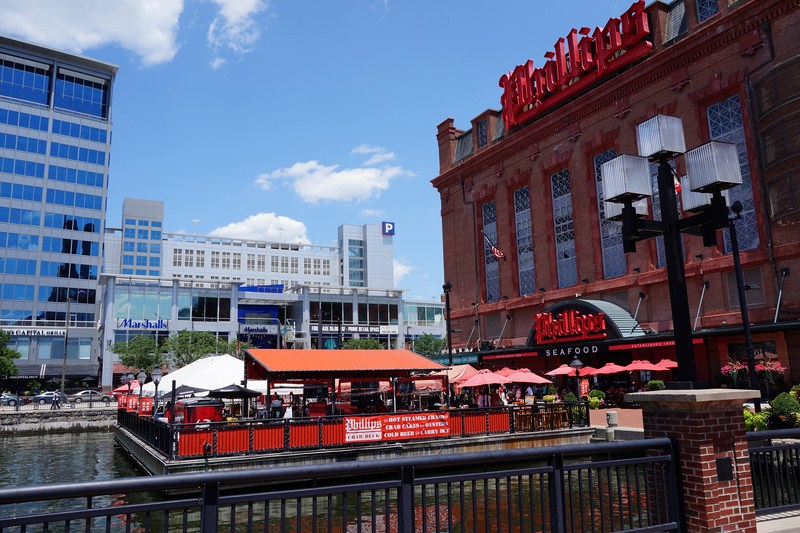
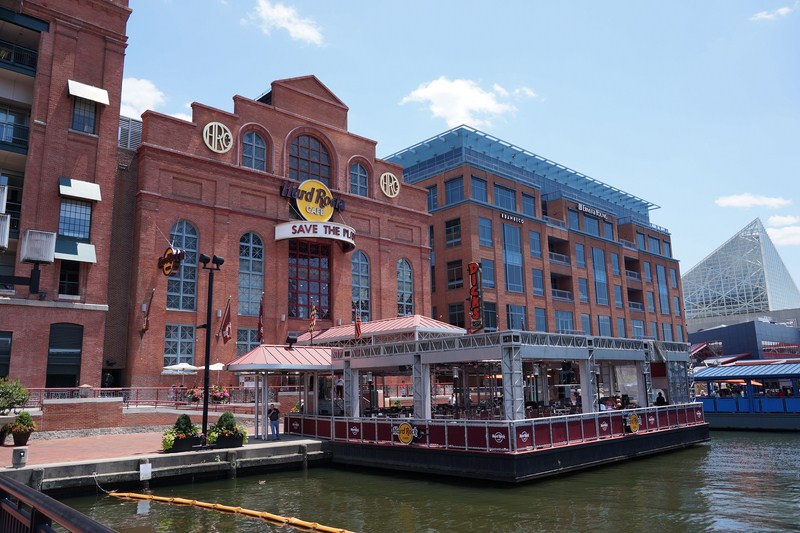
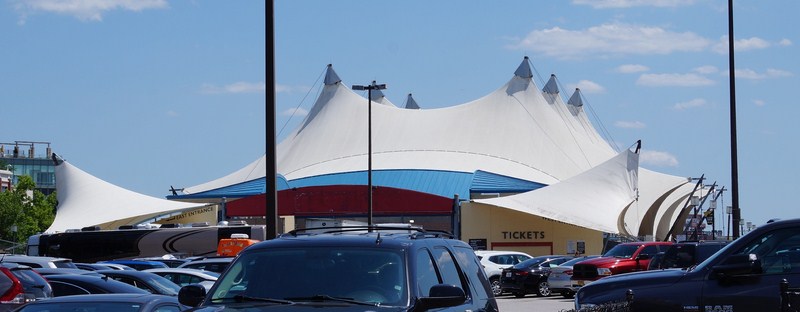
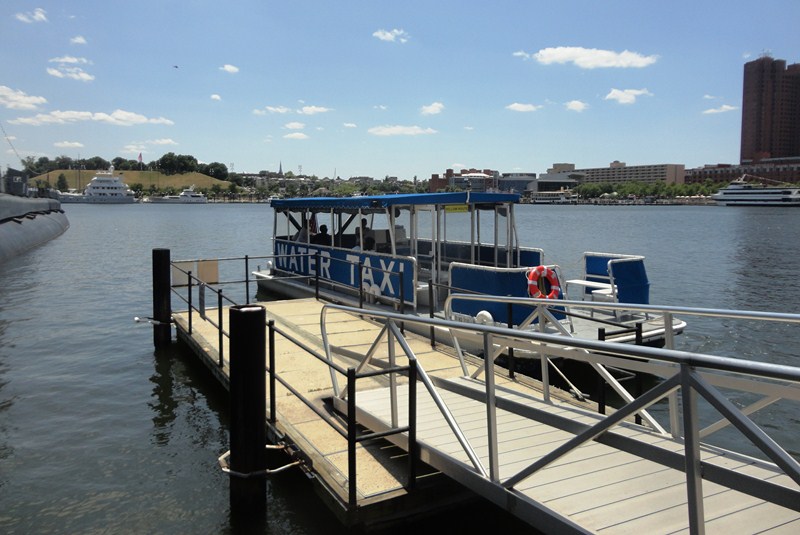
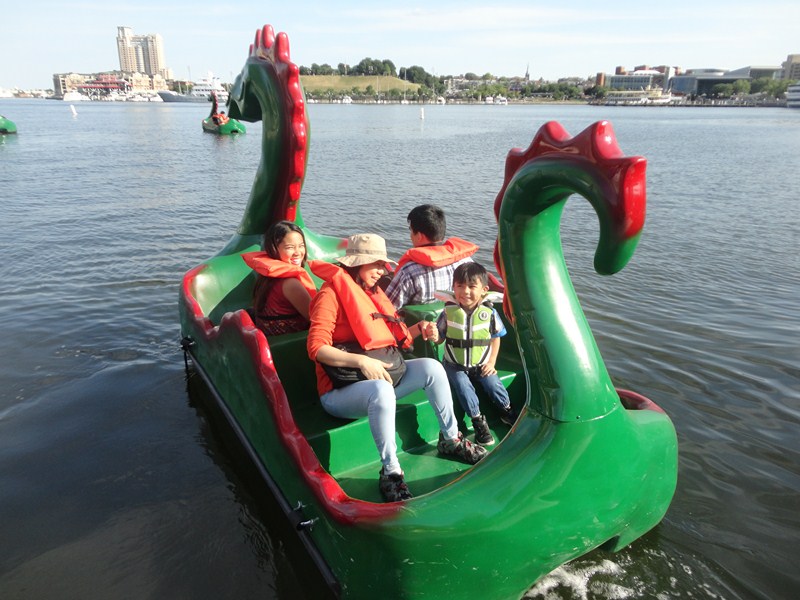
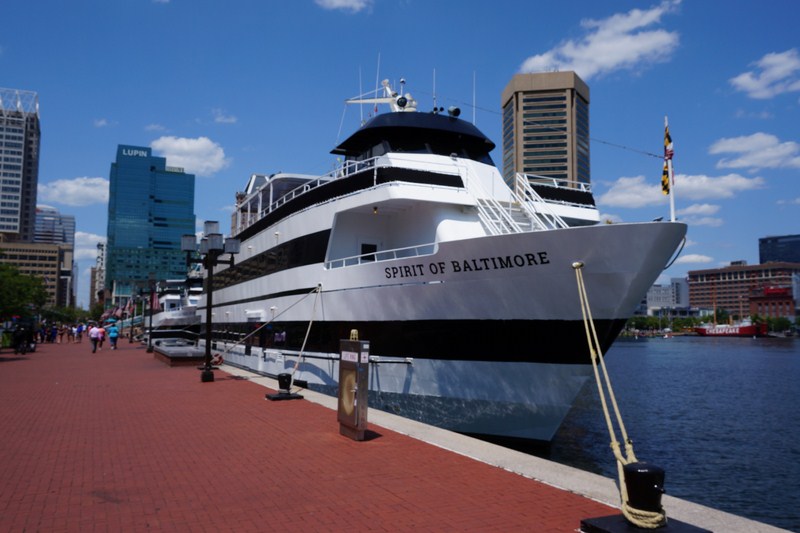
Pingback: National Aquarium of Baltimore (Maryland, USA) – B.L.A.S.T. – Live Life to the Fullest ……… Don't Stay Put